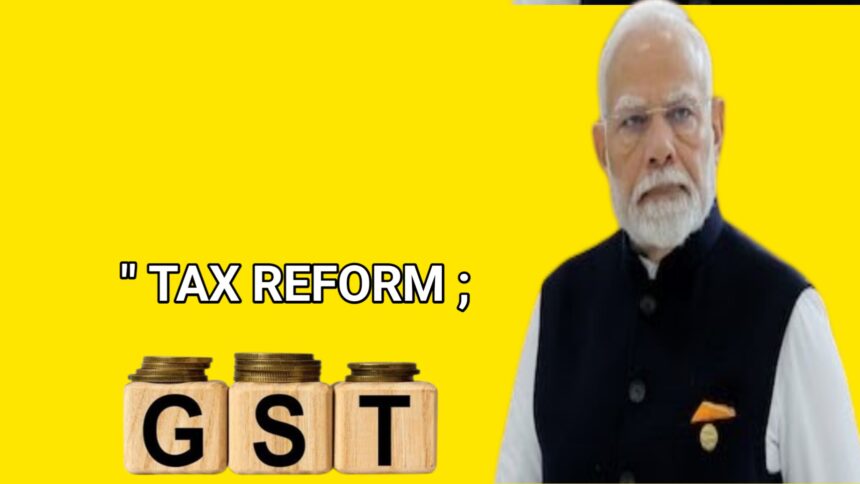By | PR Network
New Delhi: The Union Government has unveiled a major revamp of the Goods and Services Tax (GST) system, promising widespread relief to households and industries ahead of the festive season. The GST Council has decided to simplify the complex four-slab structure into just two rates of 5% and 18%, while also introducing a 40% bracket for luxury and sin goods such as premium cars, alcohol, and tobacco.
A key highlight of the reform is that life and health insurance policies will now be completely tax-free, with GST reduced from 18% to 0%. This exemption is being seen as a landmark step towards making healthcare and financial security more affordable for common citizens. Everyday essentials such as soap, toothpaste, shampoo, and hair oil will now be taxed at just 5%, while school and stationery items including notebooks, pencils, and charts have been moved to the zero-tax category, offering significant savings for families.
Consumer durables and electronic appliances have also been given a boost, with GST on items like air conditioners, washing machines, dishwashers, and televisions reduced from 28% to 18%. The move is expected to encourage higher sales during the upcoming festive season. At the same time, farmers will benefit from reduced GST on fertilisers, seeds, and agricultural inputs, while the renewable energy sector will gain from a lower 5% tax on solar and wind equipment. However, coal and lignite will now attract 18% GST, reflecting the government’s effort to push cleaner energy alternatives.
The reforms have been widely welcomed across the country. Analysts believe household expenses could come down by nearly 10%, which would boost demand in both urban and rural markets. Political leaders have described the changes as revolutionary and pro-poor, while industry leaders are calling them a game-changing step for India’s economy. Farmers, MSMEs, and consumers are expected to gain directly from these tax cuts. However, concerns have been raised by the textile sector, where GST on apparel above ₹2,500 has been increased to 18%, raising fears that festive season demand may weaken.
The government is positioning the reform as “GST 2.0,” with Prime Minister Narendra Modi describing it as a double dose of growth and support for the nation. Officials have clarified that the reforms were not a reaction to global trade tensions but were planned as part of a long-term tax rationalisation strategy. Overall, the GST overhaul marks one of the most significant shifts in India’s taxation framework since the system was introduced, aiming to simplify compliance, reduce costs, and stimulate economic growth.








